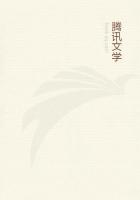Unless I labor under a delusion, I think that I see the necessity for this privilege. The egg of the carnivorous burrower is firmly fixed on the victim at a point which varies considerably, it is true, according to the nature of the prey, but which is uniform for the same species of prey; moreover--and this is an important condition--the point of adhesion of that egg is always the head, whereas the egg of a bee, of the Osmia, for instance, is fixed to the mess of honey by the hinder end. When hatched, the new born Wasp grub has not to choose for itself, at its risk and peril, the suitable point at which to take the first cut in the quarry without fear of killing it too quickly: all that it need do is to bite at the spot where it has just been born. The mother, with her unfailing instinct, has already made the dangerous choice; she has stuck her egg on the propitious spot and, by the very act of doing so, marked out the course for the inexperienced grub to follow. The tact of ripe age here guides the young larva's behavior at table.
The conditions are very different in the Anthrax' case. The egg is not placed upon the victuals, it is not even laid in the mason bee's cell. This is the natural consequence of the mother's feeble frame and of her lack of any instrument, such as a probe or auger, capable of piercing the mortar wall. It is for the newly hatched grub to make its own way into the dwelling. It enters, finds itself in the presence of ample provisions, the larva of the mason bee. Free of its actions, it is at liberty to attack the prey where it chooses; or rather the attacking point will be decided at haphazard by the first contact of the mouth in quest of food. Grant this mouth a set of carving tools, jaws and mandibles; in short, suppose the grub of the Fly to possess a manner of eating similar to that of the other carnivorous larvae;and the nursling is at once threatened with a speedy death. He will split open his nurse's belly, he will dig without any rule to guide him, he will bite at random, essentials as well as accessories; and, from one day to the next, he will set up gangrene in the violated mass, even as I myself do when I give it a wound. For the lack of an attacking point prescribed for him at birth, he will perish on the damaged provisions. His freedom of action will have killed him.
Certainly, liberty is a noble attribute, even in an insignificant grub; but it also has its dangers everywhere. The Anthrax escapes the peril only on the condition of being, so to speak, muzzled.
His mouth is not a fierce forceps that tears asunder; it is a sucker that exhausts but does not wound. Thus restrained by this safety appliance, which changes the bite into a kiss, the grub has fresh victuals until it has finished growing, although it knows nothing of the rules of methodical consumption at a fixed point and in a predetermined direction.
The considerations which I have set forth seem to me strictly logical: the Anthrax, owing to the very fact that he is free to take his nourishment where he pleases on the body of the fostering larva, must, for his own protection, be made incapable of opening his victim's body. I am so utterly convinced of this harmonious relation between the eater and the eaten that I do not hesitate to set it up as a principle. I will therefore say this: whenever the egg of any kind of insect is not fastened to the larva destined for its food, the young grub, free to select the attacking point and to change it at will, is as it were muzzled and consumes its provisions by a sort of suction, without inflicting any appreciable wound. This restriction is essential to the maintenance of the victuals in good condition. My principle is already supported by examples many and various, whose depositions are all to the same effect. The witnesses include, after the Anthrax, the Leucospis [a parasitic insect] and his rivals, whose evidence we shall hear presently; the Ephialtes mediator [an Ichneumon fly], who feeds, in the dry brambles, on the larva of the Black Psen [a digger wasp]; the Myodites, that strange, fly-shaped beetle whose grub consumes the larva of the cockchafer.
All--flies, ichneumon flies and beetles--scrupulously spare their foster mother; they are careful not to tear her skin, so that the vessel may keep its liquid good to the last.
The wholesomeness of the victuals is not the only condition imposed: I find a second, which is no less essential. The substance of the fostering larva must be sufficiently fluid to ooze through the unbroken skin under the action of the sucker.
Well, the necessary fluidity is realized as the time of the metamorphosis draws near. When they wished Medea to restore Pelias to the vigor of youth, his daughters cut the old king's body to pieces and boiled it in a cauldron, for there can be no new existence without a prior dissolution. We must pull down before we can rebuild; the analysis of death is the first step towards the synthesis of life. The substance of the grub that is to be transformed into a bee begins, therefore, by disintegrating and dissolving into a fluid broth. The materials of the future insect are obtained by a general recasting. Even as the founder puts his old bronzes into the melting pot in order afterwards to cast them in a mould whence the metal will issue in a different shape, so life liquefies the grub, a mere digesting machine, now thrown aside, and out of its running matter produces the perfect insect, bee, butterfly or beetle, the final manifestation of the living creature.















